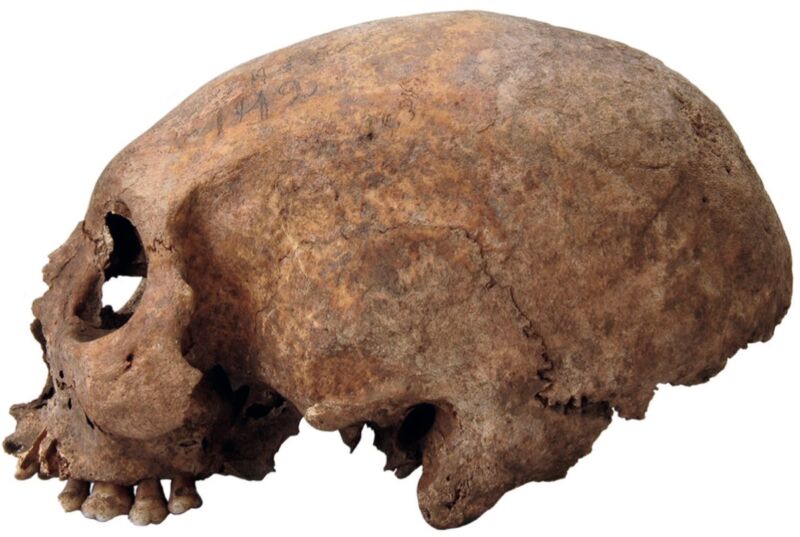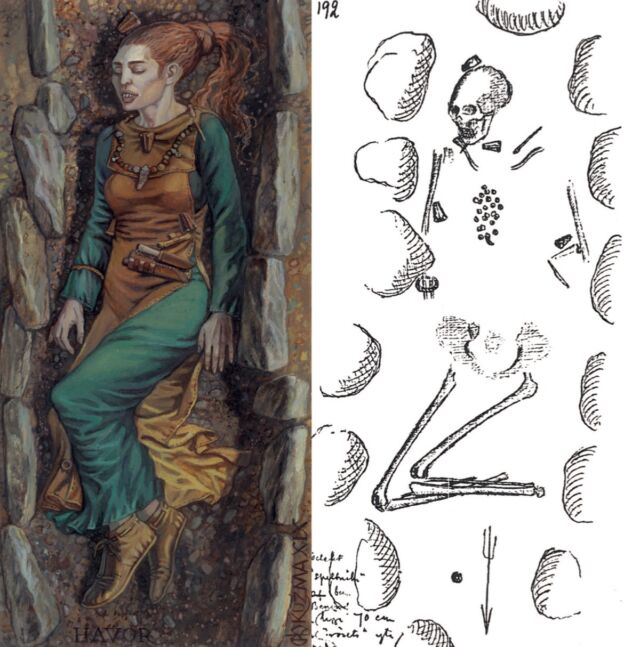When In Gotland —
There would possibly be also proof of intentionally filed enamel on some 130 male Viking skulls.
–

Compose bigger / Artificially modified skull from a female Viking individual in Havor, Hablingbo parish, Gotland.
German archaeologists came across that the skulls of three medieval Viking women came across on the Swedish island of Gotland within the Baltic Sea confirmed proof of an uncommon route of to elongate their skulls. The route of gave them an uncommon and distinctive appearance, in accordance with a paper published within the journal Present Swedish Archaeology. Alongside with proof that the Viking males from the island would perhaps perhaps perhaps even have intentionally filed their enamel, the discovery sheds gentle on the characteristic body modification would perhaps perhaps perhaps even have played in Viking tradition
When americans hear about Viking body modification, they doubtless factor in Viking tattoos, particularly since the Historical past Channel series Vikings popularized that concept. But whether proper Vikings sported tattoos is a subject of essential debate. There would possibly be not such a thing as a spot of tattoos within the few Norse sagas and poetry which have survived, though other uncommon physical characteristics are on the total talked about, corresponding to scars.
One of the best precise proof comes from a tenth century sprint story by an Arab traveler and trader named Ahmad Ibn Fadlan, whose sprint story, Mission to the Volga, describes the Swedish Viking merchants (“Rusiyyah”) he met within the Center Volga field of Russia. “They’re shadowy from the suggestions of their toes simply up to their necks—trees, photos, and the relish,” Ibn Fadlan wrote. However the particular Arabic translation is unclear, and there isn’t any fascinating archaeological proof, since human pores and skin most ceaselessly would not retain for centuries after a Viking burial.
-
Skull of male with filed enamel and healed wreck from grave 25, Slite, Othem parish, Gotland.
-
Side of the filed enamel from male in grave 25 from Slite, Othem parish, Gotland.
But there is proof of body modification. Archaeologists within the 1980s well-known “queer marks” on the enamel of male Viking Age skulls that looked relish the enamel had been intentionally filed. Some 130 examples of Norse skulls with filed enamel have since been came across, 80 p.c from Gotland. The marks are most ceaselessly on the upper entrance enamel and characteristic horizontal grooves in straight-line patterns, though there are also the occasional crescent-shaped marks as well. A 2005 study by osteologist Caroline Arcini of Sweden’s Nationwide Historical Museums—who later wrote a book with an summary of the a form of cases she came across of filed enamel amongst Norsemen, amongst other topics—concluded that the marks had been “skillfully made” and that it modified into once no longer doubtless that the males in predict had filed their very maintain enamel and made the marks themselves.
There are other cultures known to have practiced enamel modification, but it with no doubt modified into once no longer typical of medieval Europe, and the Vikings did no longer most ceaselessly have dental work performed. The route of would have been very painful, but Arcini came across no proof that the be aware modified into once part of an initiation or ceremony of passage for young males, nor modified into once it doubtless such males had been warriors, elite contributors of society, or slaves. Given the concentration of such males from Gotland, she beneficial the customised originated on the island or that the enamel had been filed in other places, but by some means the island modified into once a gathering level for such males.
Matthias Toplak (Viking Museum Haithabu) and Lukas Kerk (University of Munster), co-authors of this latest perceive, point out that the enamel filing would perhaps perhaps perhaps even have been a formulation to determine fellow contributors of a closed community of merchants. The three 11th century women with elongated skulls provide a more puzzling conundrum. The skulls had been excavated from three varied cemeteries on Gotland, buried sometime within the 2nd half of of the 11th century, fully dressed with ornate jewellery but dinky else within the manner of grave items. Two had been between the ages of 25 and 30, while the third modified into once an older girl between 55 and 60.

Compose bigger / Inventive reconstruction of the burial (left) of female stays with an artificially modified skull in grave 192 from Havor, Hablingbo parish, Gotland. (simply) Drawing of the grave.
Mirosław Kuźma/Matthias Toplak
Provided that every person three burials are rather shut chronologically, the authors concluded the three women doubtless shared a typical background that eager the be aware of skull modification. But there are scant clues as to why such adjustments had been conducted. Per Toplak and Kerk, there is proof of skull elongation being practiced in hundreds of aged and medieval cultures, from South The United States and Central Asia to Southeast Europe. The route of most ceaselessly eager binding the heads of young young americans (most ceaselessly female) under the age of three with wooden or cloth.
It be likely the be aware at final came across its formulation to Gotland by Bulgaria for the length of this interval, though one other exchange is that the three women had been truly born in other places and at final settled on Gotland—in all likelihood the young americans of merchants. That would perhaps perhaps perhaps also existing why the island has no infant or child burials exhibiting signs of elongated skulls, suggesting it modified into once a foreign be aware no longer broadly adopted in Viking Age Gotland.
It modified into once doubtless conducted on the three women for the length of early childhood “to particular their affiliation to a clear social community,” Toplak and Kerk wrote. “On Gotland, nevertheless, this signal modified into once doubtless unknown to the wider society. The body modification would perhaps perhaps perhaps even have been perceived as an exotic or foreign trait which did no longer pause the individual from being constructed-in into the community and its prevailing burial customs.”
Present Swedish Archaeology, 2024. DOI: 10.37718/CSA.2023.09 (About DOIs).

Leave a Reply